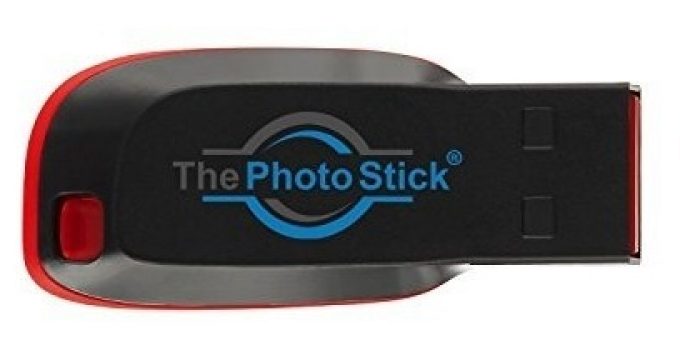9 Technology Trends That Will Boost Business Growth in 2022 and Beyond

As digital transformation continues to evolve, it’s time to start thinking about the next wave of technology trends that will shape the business landscape in the coming years.
From 5G network and blockchain technology to edge computing and life science technologies, these cutting-edge technologies will have a major impact on businesses of all sizes in the years to come.
Whether you’re looking to streamline your operations, create more personalized customer experiences, or stay ahead of the competition, below are nine trends that will help you boost your business in 2022 and beyond.
5G Network
The COVID-19 pandemic has taught the world the importance of businesses investing in networking and interconnectivity technologies like 5G. The next-generation wireless network has the potential to revolutionize how businesses operate, connect with customers, and manage data. With its high speeds and low latency, businesses can now move large amounts of data quickly and efficiently. This is especially beneficial for businesses in various industries, including healthcare, manufacturing, and logistics.
Blockchain Technology
The distributed ledger technology has the potential to streamline a variety of business processes, from supply chain management to contract management. By using blockchain, businesses can now create a more efficient and transparent way of doing business. This is especially important in today’s climate of heightened security concerns and increasing regulation.
The introduction of programs like smart contracts in blockchain technology is especially important in the efficient execution of contracts. Businesses can now automate various tasks with smart contracts, from payments to approvals. This not only saves time, but also reduces the chances of errors.
IoT
The Internet of Things (IoT) is another technology trend set to transform businesses in the years to come. IoT refers to the network of physical devices, vehicles, home appliances, and other items that are connected to the internet.
These devices can collect and exchange data, making them valuable for businesses. In 2022, the number of worldwide IoT devices is estimated at 16.4 billion, which is expected to hit the 30 billion mark by 2025.
Businesses can gain insights into customer behavior, trends, and patterns by gathering data from IoT devices. This information can then improve products and services and marketing and sales strategies.
Virtual Reality (VR) and Augmented Reality (AR)
VR and AR are two technologies that are rapidly gaining popularity. VR allows users to immerse themselves in a completely computer-generated environment, while AR overlays digital information in the real world.
Businesses are already using AR and VR in various industries, including retail, healthcare, education, and training. For instance, the healthcare industry uses VR to provide immersive training for surgeons, while the retail industry uses AR to create virtual showrooms. Beyond 2022, it’s expected that the use of VR and AR will continue to grow, particularly in the enterprise sector.
AI and Big Data Analytics
The next few years are also likely to see a continued increase in artificial intelligence (AI) and big data analytics. Businesses are increasingly turning to AI to automate tasks, improve efficiency, and make better decisions.
Big data analytics is used to gain insights into customer behavior, optimize marketing campaigns, and predict future trends. With these predictive analytics capabilities, businesses are now better placed to make decisions that can drive growth.
Non-Fungible Tokens (NFTs)
NFTs are digital assets that are not only revolutionizing the online market but are also unique and difficult to replace. This makes them ideal for tracking ownership of digital assets, such as art, music, and other collectibles.
With the Ethereum ERC-755 standard launch, NFTs are now easier to create and use. This has led to a boom in the NFT market, with businesses of all sizes creating and selling NFTs. Some of the world’s biggest brands, such as Nike and Louis Vuitton, have already started using NFTs to create unique experiences for their customers.
It is clear that NFTs are here to stay and will only become more popular in the years to come. Businesses that adopt this technology early on will be well-positioned to take advantage of the growing market for NFTs.
Metaverse
A metaverse is a shared, virtual space where people can meet and interact. It’s often used in the context of gaming, but it can also be used for other purposes like social networking, education, and business. The metaverse practically allows all internet users with various technological applications like AR, VR, cryptocurrency, and social media to interact seamlessly.
The metaverse is already taking shape in the business world, with multinational giant Facebook being the latest big name to subscribe to and even changing its name to meta. We expect metaverse to provide great opportunities for businesses to interact with their customers more personally and create new experiences.
Edge Computing
Edge computing is a network architecture where information processing and data storage are concentrated at the edge of the network, near the data source. The main purpose of edge computing is to reduce latency and improve performance by bringing computation and data storage closer to the devices that need them.
This trend is driven by the increasing demand for real-time applications such as augmented reality, virtual reality, and the Internet of Things. Edge computing can also help businesses save money on infrastructure costs by reducing the amount of data that needs to be sent to the cloud for processing.
We expect edge computing to become more prevalent in the coming years as businesses look for ways to improve performance and reduce latency.
Life Science Technologies
Precision medicine focuses on treating each patient according to their unique genetic makeup. To make precision medicine a reality, healthcare facilities need life science technologies to provide them with the data they need to make informed decisions about treatment.
Some life science technologies currently being used to enable precision medicine include DNA sequencing, gene editing, and CRISPR. These technologies are helping healthcare professionals to tailor treatments to the individual needs of their patients and, as a result, improve patient outcomes.
Many of these trends are interconnected, so it’s important to keep an eye on them. If you want to stay ahead of the curve, it’s also important to keep an eye on emerging trends so you can be one of the first to adopt them.





